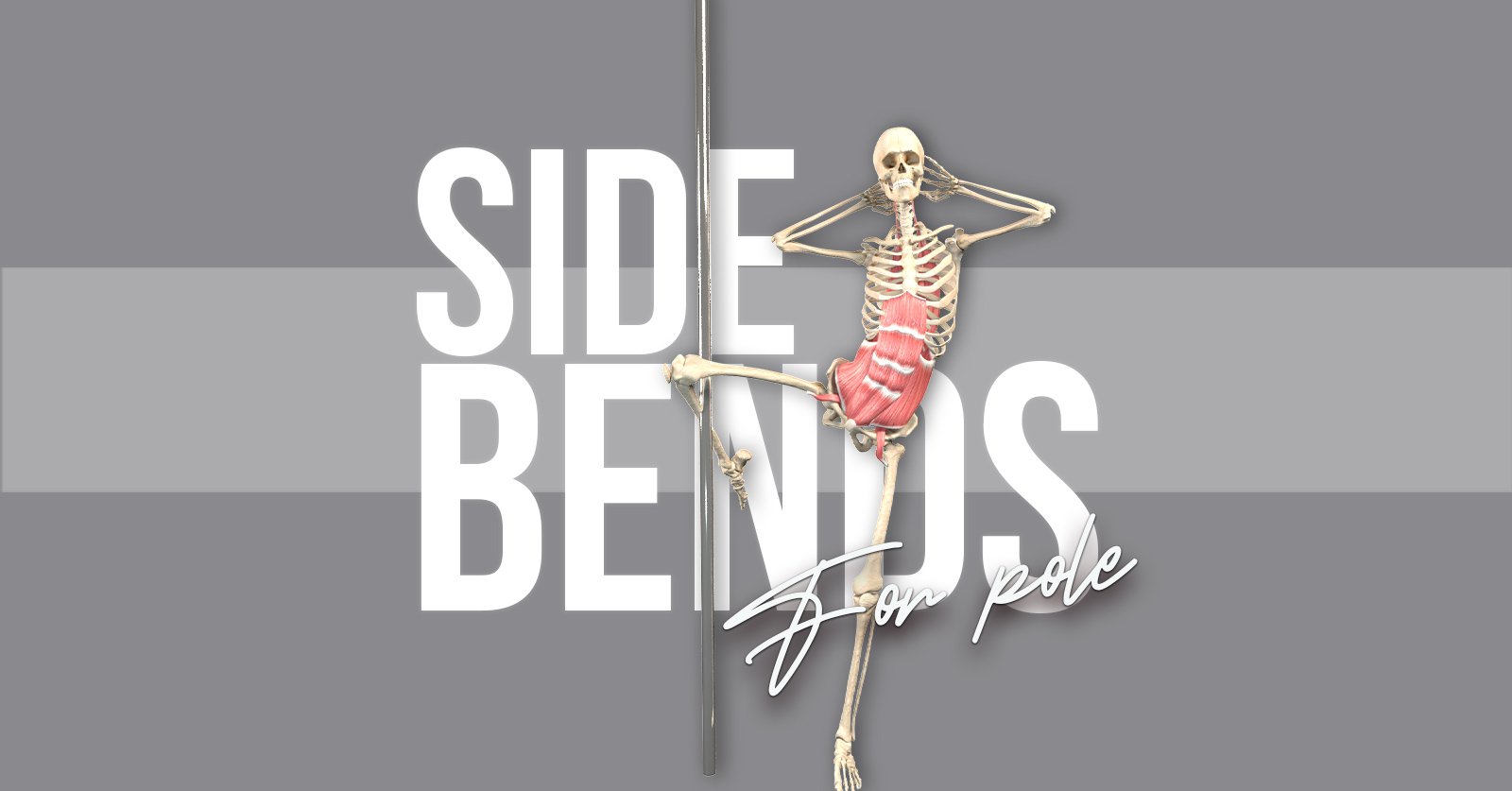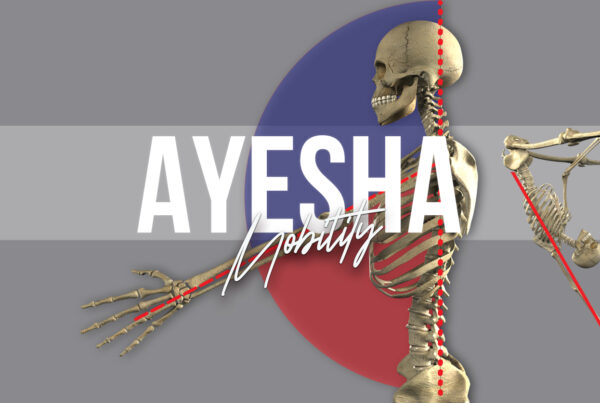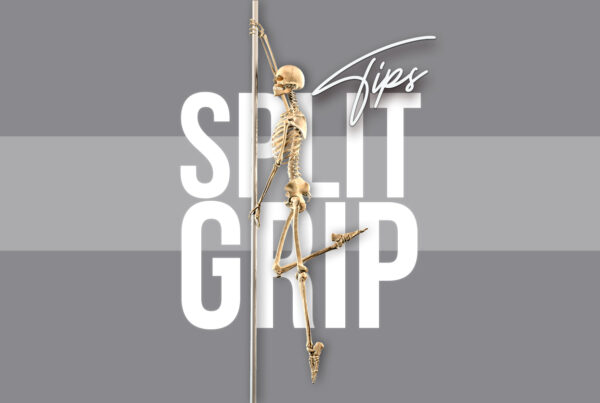Before we channel our inner wacky waving inflatable tube man and dive into some side bending exercises, let’s first indulge in a little nerding and visualise some of the different ways we use our ‘side bending’ muscles when we pole!
Rather watch than read? I got you! You can watch the quick fire video run-through of this blog post here:
Keep on scrolling below for more details on the anatomy and the exercises!
What do we mean by ‘side bending’?
Side bending (aka lateral flexion, if you wanna get fancy with the terminology), is the action of, you guessed it – bending our spine to the side.
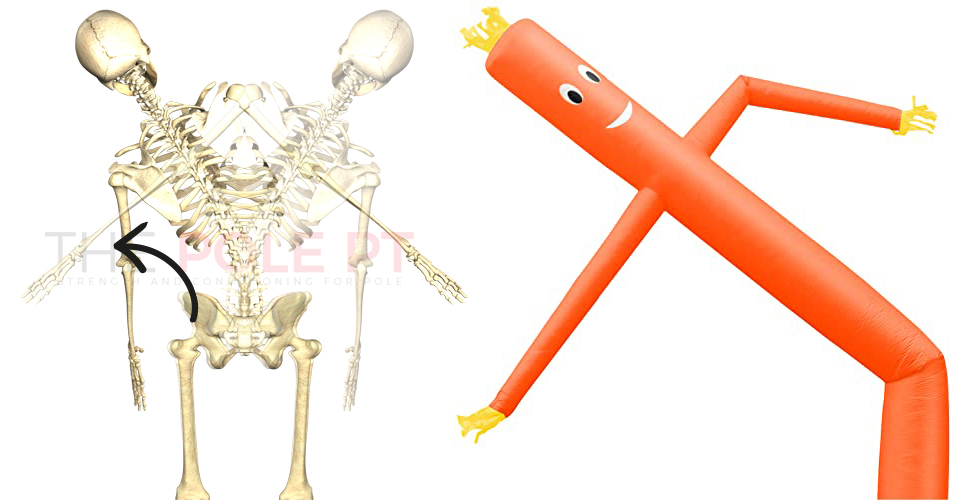
Unlike our wacky tube man here, we don’t just hinge from one single point, but spread the load of that bend across the vertebrae of our spine. To create the bend, we use a few different muscles, the main ones being: psoas major, quadratus lumborum, internal and external oblique, and our erector spinae.
The muscles are contracting on one side and lengthening on the other.

We use these ‘side bending’ muscles a few different ways when we pole!
For example, sometimes we use them to resist side bending, in moves like flags.
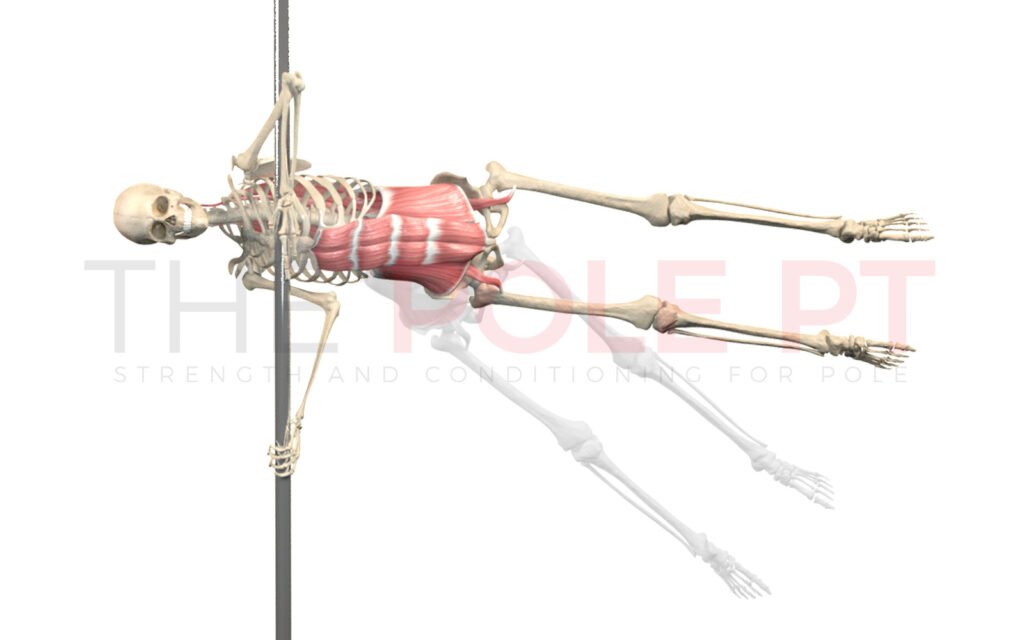
But we also quite often move into and hold side bend positions, like when we make that tasty butt platter in our Jade split.
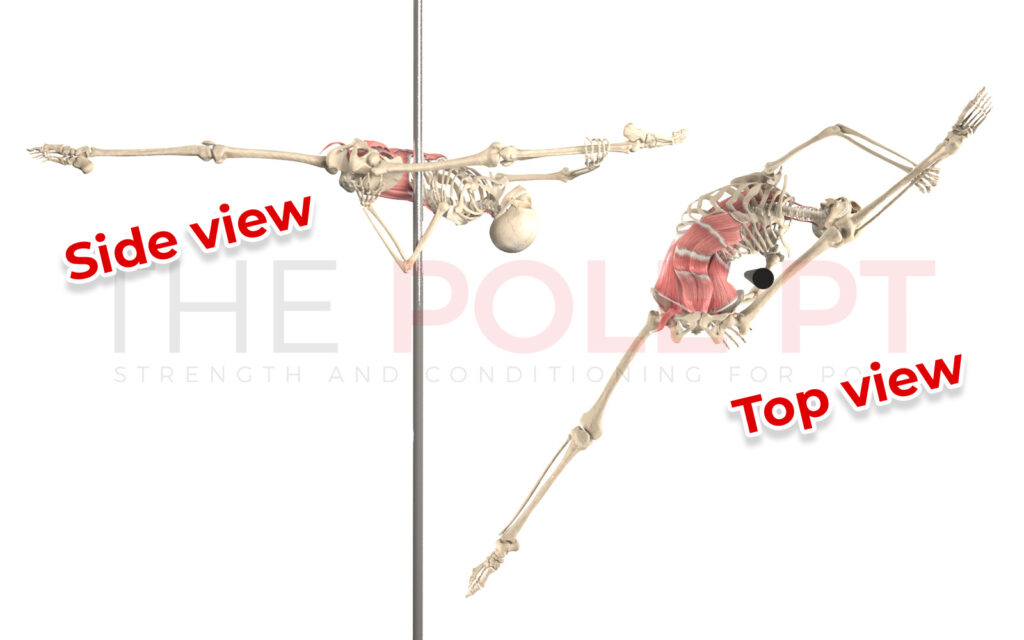
We also use them to help stabilise and control our position in the air, like in a pole handstand or an Ayesha, where we’re controlling the amount of side bend to help us adjust the position of our hips and find the balance point!

This is why exercises that focus on resisting as well as controlling side bending can be really beneficial as part of a well-rounded strength and conditioning programme for pole!
Obviously, this is just one small aspect of core training that we’re zooming in on here, but if you think you’d benefit from strengthening your side bend, or you’re looking for exercise suggestions for that, here’s a few examples to get you thinking about the kinds of movements you could incorporate into your training!
Along the way, I’ll explain the approach I usually take when it comes to programming side bending exercises.
Lateral flexion training for pole dancers!
In my exercise programming, I pretty much always start clients with ‘anti-lateral flexion’ exercises (i.e. exercises where we’re resisting side bending) first.
As well as making sure my clients have a good foundation level of stability in these anti-lateral flexion exercises, in these initial stages I’d also try to help them establish the movement pattern of moving into and out of a basic side bend position without load, so that’s what my first two exercise examples will cover.
1: Resisting side bending
To be honest, if I had to pick a desert island ‘anti-lateral flexion’ exercise, it’d probably be a good ol’ basic side plank …and I’d be allowed side plank variations, too, right?
But, I’ve chosen a ‘suitcase carry’ for my example here because it’s another solid favourite of mine. It incorporates movement (walking) while resisting side bending and also challenges grip strength. Bonus!
Note that to really get the benefit of this exercise, you need to go heavy with the weight – but as always, build up gradually!
2: Unloaded side bending
Here’s an example of an unloaded side bend movement that I might use in warm ups and cool downs to get clients moving in and out of a side bend, as mentioned above, taking a little time to understand what the movement pattern feels like as well as giving a chance to feel out any side-to-side differences in mobility/movement patterns.
3: Loaded side bending
Once clients have the basics covered (a good level of stability in resisting side bending and they are comfortable in the side bend movement itself, without load), that’s when I might start to introduce loaded side bends, or start to combine the side bend movement with other elements. Exercises 3 and 4 will cover these two things…
This exercise can also be done with a dumbbell, like this:
Note that in this version of the exercise, we’re not thinking about ‘crunching’ the side that has the weight/band – or letting the weight/band pull us down into a side bend on that side. Instead, we’re controlling the side bend to the OPPOSITE side (against the resistance of the weight) and then coming back to neutral.
4: Combining side bending with other elements
Of course, when we pole, we’re never just side bending in isolation! We’re usually also pushing or pulling (or both at the same time) with our upper body, our spine is usually also rotating or resisting rotation as well – and maybe there’s some extension and flexion happening, too! Our hips / legs are also usually active in some end-range movement as well because… well, we’re pole dancers, of course we’re gonna be doing something extra!
This is why, once we have a good foundation of strength and control in lateral flexion, it’s useful to be able to combine that with other movements.
BUT! Please don’t just jump ahead to this stage – squeeze all the juice you can from the basics above – spending time mastering the basics is the thing that will really put you in a strong place. And it goes without saying that the exercises you choose to combine with your side bends should always be based on the other training you’ve been doing in preparation, as well as your goals / any particular skills you are working towards.
I’ve chosen this oblique tuck, just to show you an example of a movement where we’re controlling the movement of our pelvis, and our upper body is the stable contact point with the floor, rather than the other way around. It also involves a plank position and some spinal rotation with the control of the side bend, so it challenges our core muscles in a different way. Our hip flexors are also working to tuck our knees in and it requires that upper body strength to maintain the active push into the floor. Ideally your training will have included some prior work in these areas before starting to add this oblique tuck.
I’ve added a more advanced progression of this exercise below which incorporates a plank to overhead push, lifting the hips into the air while creating and controlling a small side bend movement. This one is for those who have also already been working on their overhead pushing and active hamstring flexibility, too. It can be particularly useful when training for tricks like pole handstand deadlifts, muscle ups and Ayeshas, which all have a lateral flexion element!
Please know that there are so many different exercises and ways to approach training when it comes to side bending – this is just a little overview of my approach and I hope it’s given you some useful nuggets!
Have you had enough or are ya thirsty for more? If you want to learn more about exercise programming for pole, I think you’ll love my book Strength and Conditioning for Pole which is available now in paperback or ebook download! Get your copy today!


